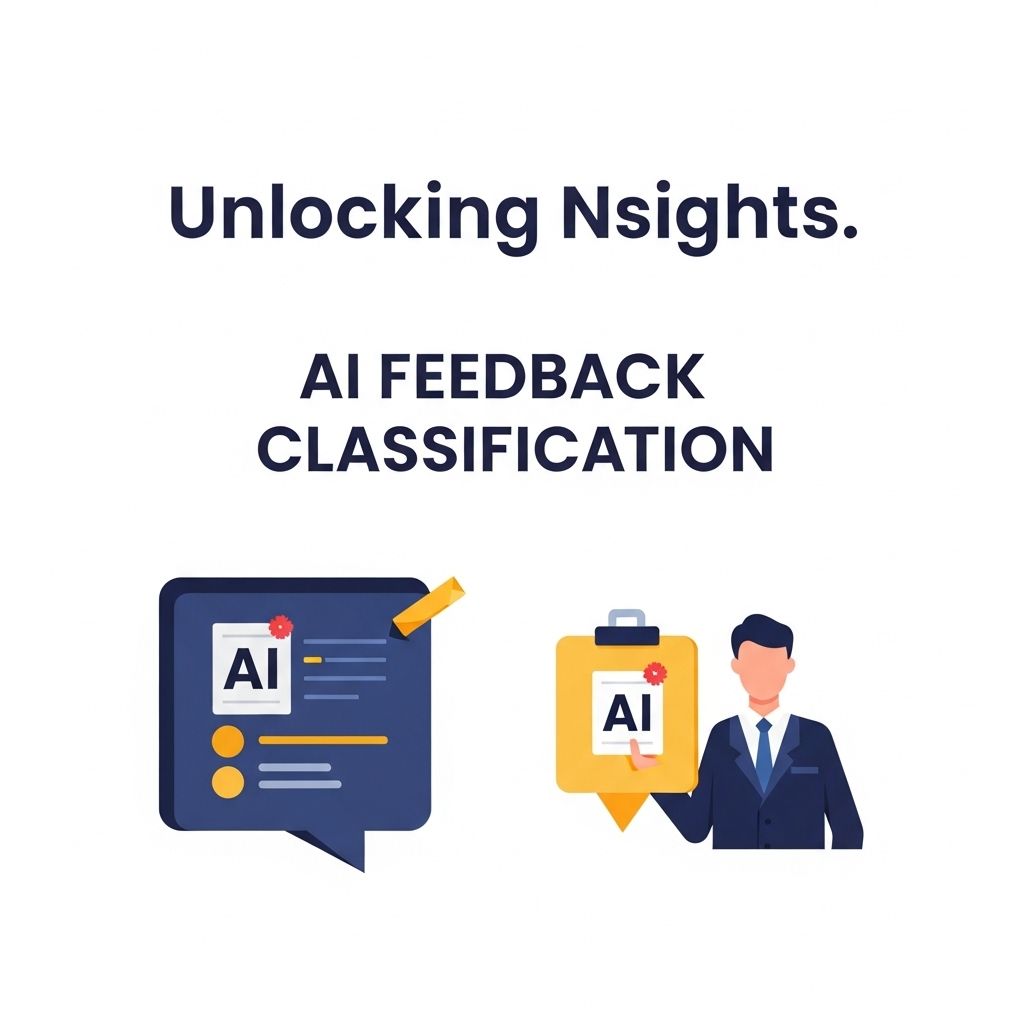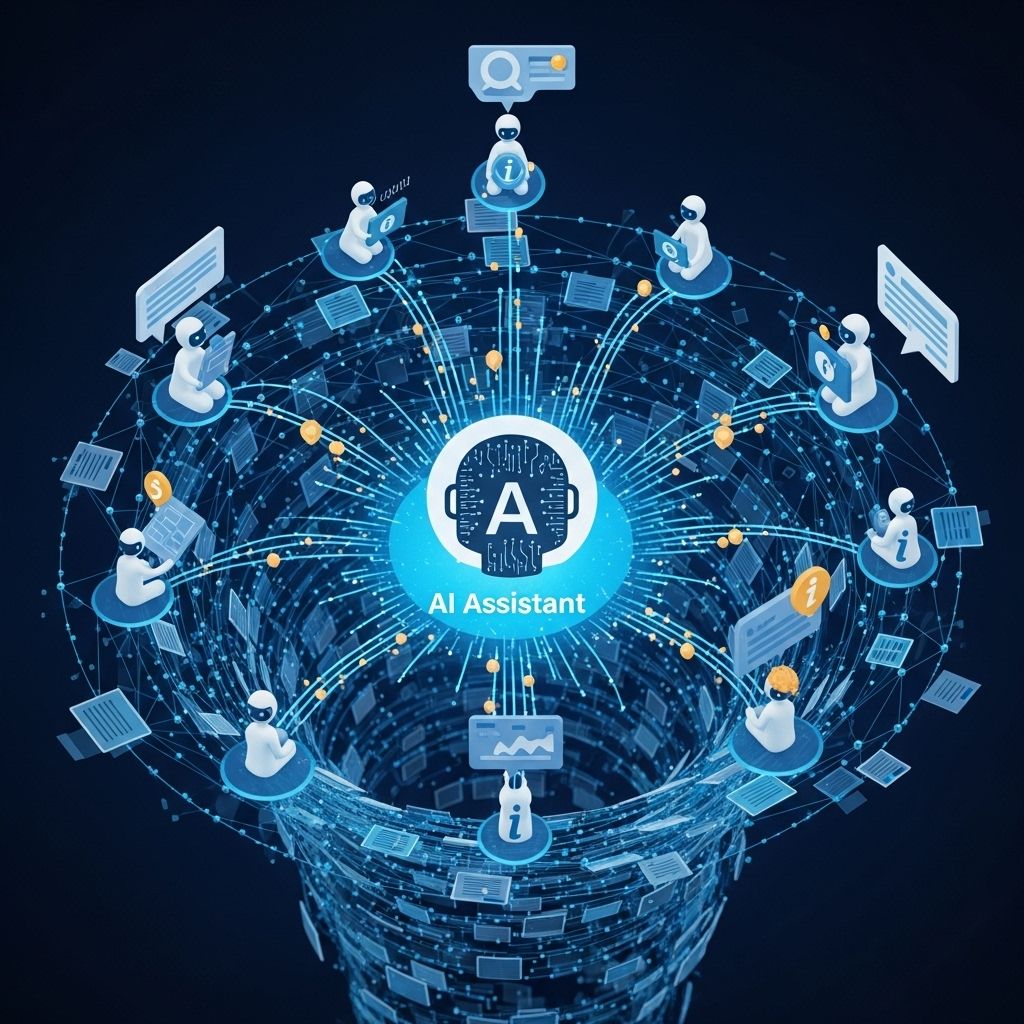Unlocking Insights: Understanding AI Feedback Classification
Discover how AI feedback classification works and its impact on data analysis and decision-making.

Artificial Intelligence (AI) has revolutionized numerous sectors, transforming how businesses operate and generate insights. Among its many applications, AI feedback classification has emerged as a game-changer, enabling organizations to streamline their feedback processes and extract actionable insights from vast amounts of unstructured data. In this article, we will delve deep into what AI feedback classification is, its importance, methods employed, and best practices for implementation.
Table of Contents
What is AI Feedback Classification?
At its core, AI feedback classification refers to the use of machine learning algorithms to categorize and analyze feedback data, typically collected from various sources such as customer reviews, surveys, and social media interactions. This process allows businesses to make informed decisions based on the sentiments and opinions expressed by their customers.
Key Components of Feedback Classification
- Data Collection: Gathering feedback from multiple channels to ensure comprehensive analysis.
- Data Preprocessing: Cleaning and preparing data to enhance accuracy in classification.
- Model Selection: Choosing appropriate algorithms that best suit the classification task.
- Training and Validation: Using historical data to train models and validate their performance.
- Deployment and Monitoring: Implementing models into production and continuously monitoring their effectiveness.
The Importance of AI Feedback Classification
Feedback classification holds significant importance in today’s data-driven landscape. Here are several reasons why organizations should prioritize it:
Enhanced Decision-Making
By implementing AI feedback classification, businesses can rapidly interpret customer sentiments and trends, leading to more informed decision-making. This approach allows for:
- Identifying areas for improvement.
- Understanding customer preferences.
- Enhancing product development cycles.
Efficiency and Scalability
Manual analysis of feedback can be labor-intensive and prone to human error. AI automates this process, enabling:
- Faster processing of large volumes of data.
- Scalability to handle increasing feedback as businesses grow.
- Consistent analysis across diverse data sources.
Methods of AI Feedback Classification
Various methods and algorithms are employed in AI feedback classification, each with its strengths and weaknesses. Below are some of the most commonly used techniques:
1. Natural Language Processing (NLP)
NLP involves using computational techniques to analyze and understand human language. In feedback classification, NLP techniques can help in:
- Tokenization: Breaking down the text into individual words or phrases.
- Sentiment Analysis: Classifying sentiments as positive, negative, or neutral.
- Named Entity Recognition: Identifying and categorizing key entities mentioned in feedback.
2. Machine Learning Algorithms
Machine learning provides a set of algorithms that can learn from data and make predictions. Some popular algorithms used in feedback classification include:
| Algorithm | Description |
|---|---|
| Logistic Regression | A statistical method for binary classification that estimates probabilities. |
| Support Vector Machines (SVM) | A supervised learning model that analyzes data for classification and regression. |
| Random Forest | An ensemble learning method that uses multiple decision trees for improved accuracy. |
| Deep Learning (Neural Networks) | A set of algorithms inspired by the human brain, effective in processing complex patterns. |
3. Hybrid Approaches
In many cases, combining different methods yields better results. For example, using NLP for text preprocessing followed by machine learning algorithms for classification can enhance the overall performance.
Best Practices for Implementing AI Feedback Classification
To effectively implement AI feedback classification in your organization, consider the following best practices:
1. Define Clear Objectives
Before commencing, it’s essential to have a clear understanding of what you aim to achieve. This may include:
- Improving customer satisfaction scores.
- Identifying product improvement areas.
- Enhancing service delivery.
2. Build a Quality Dataset
The accuracy of classification models relies heavily on the quality of the dataset. Ensure your data is:
- Diverse: Collect feedback from various sources.
- Relevant: Focus on data that directly pertains to your objectives.
- Clean: Remove noise and irrelevant information.
3. Continuously Monitor and Update Models
AI models can degrade over time as new trends and languages emerge. Regularly monitor performance metrics and update models accordingly to maintain accuracy.
Conclusion
AI feedback classification is a powerful tool that enables businesses to extract valuable insights from customer feedback efficiently. By leveraging this technology, organizations can enhance their decision-making processes, improve customer satisfaction, and drive innovation. As AI continues to evolve, the potential applications of feedback classification are vast, paving the way for smarter, data-driven businesses.
FAQ
What is AI feedback classification?
AI feedback classification is the process of using artificial intelligence to categorize and analyze feedback data, helping organizations understand customer sentiments and improve products or services.
How does AI feedback classification work?
AI feedback classification works by using machine learning algorithms to process large volumes of feedback, identifying patterns and trends to classify responses into predefined categories.
What are the benefits of using AI for feedback classification?
The benefits include increased efficiency, improved accuracy in sentiment analysis, faster response times, and the ability to gain actionable insights from large datasets.
Can AI feedback classification be applied to different types of feedback?
Yes, AI feedback classification can be applied to various types of feedback, including customer reviews, survey responses, social media comments, and support tickets.
What industries can benefit from AI feedback classification?
Industries such as retail, healthcare, technology, and hospitality can benefit significantly from AI feedback classification to enhance customer experience and optimize operations.
Is AI feedback classification accurate?
AI feedback classification can be highly accurate, especially with well-trained models and sufficient data, but its effectiveness can vary based on the quality of the data and the complexity of the feedback.



